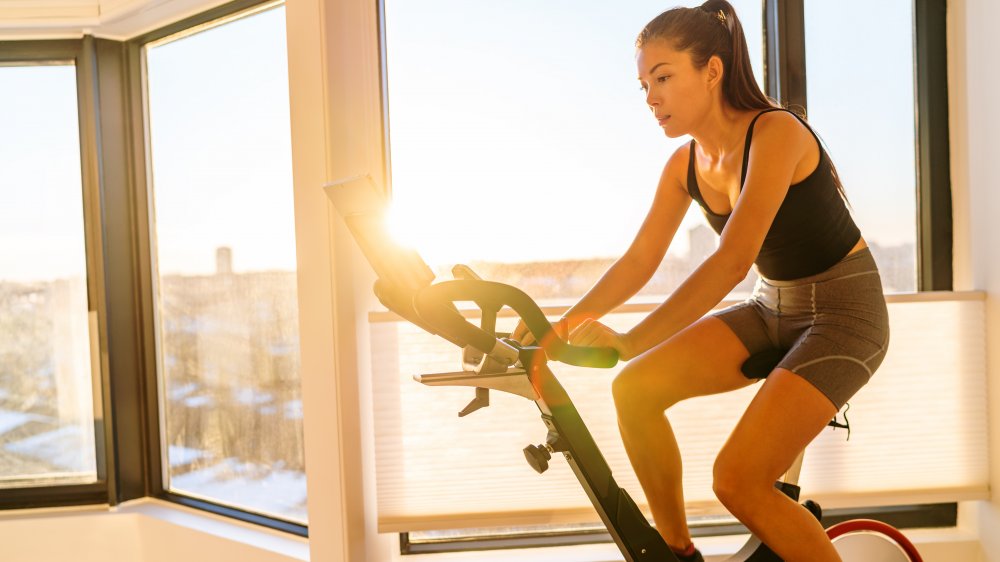Why Taking A Spin Class Could Be More Risky Than You Think
Spinning isn't just a workout — it's a phenomenon. Whether you're pushing yourself to the max at FlyWheel, SoulCycle, or at home on your Peloton, you know from the moment you climb astride that metal straddle, you can look forward to the glory of sweat, endorphins, and a furnace-like burn of calories. The very first stationary bicycle, called the Gymnasticon, debuted in 1897, but it wasn't until Schwinn produced a bike for home use in 1965 that the trend took off (via Timeline). It would be an additional four decades before SoulCycle would hit the scene in New York City, inspiring a cult-like following and a number of — excuse the pun — spin-off boutique cycling studios (via Fast Company).
Along with the increase in spinning's popularity, though, experts have seen an increase in visits to the emergency room, due to a condition called exertional rhabdomyolysis — symptoms of which include vomiting, nausea, weakness, tenderness, and swelling, and in rare cases, lasting kidney damage (via Insider).
In an article published by the American Journal of Medicine, researchers tied this condition specifically to taking spin class. "Spin class is a great exercise," the study's co-author Alan Coffino, M.D., Ph.D., told The New York Times. "But it's not an activity where you start off at full speed. And it's important for the public to realize this and for trainers to realize this."
Listening to your own body is key to spinning safely
One important thing to note about the study: the majority of the patients experienced exertional rhabdomyolysis while taking their very first spin class. Experts say this condition, as well as other injuries associated with spinning, are usually due to lack of experience — or focusing so much on following the class instructor that you end up ignoring that voice inside your head saying, "Hey! Stop, this is too hard!"
Since there's so much peer pressure and encouragement to keep on keepin' on from the instructor, spinners often will push themselves harder than they would if, say, they were running outside, noted study co-author Dr. Maureen Brogan, who is also an associate professor of medicine at New York Medical College. "I mean, Spinning, you burn 600 calories in an hour, and you lose up to a liter an hour of sweat," she commented to Time. "Six hundred calories is like running six miles. So if you're not conditioned, you wouldn't just run six miles."
This decision to push past your comfort zone is also responsible for the most common complaint among spinners: back pain. "If you're laying over the handlebars because you're fatigued, you're putting a lot of stress on your lower back," Anthony Hackney, Ph.D., a professor of exercise physiology and nutrition at the University of North Carolina at Chapel Hill, told Insider. "The bike's not designed to give you support in that context."


